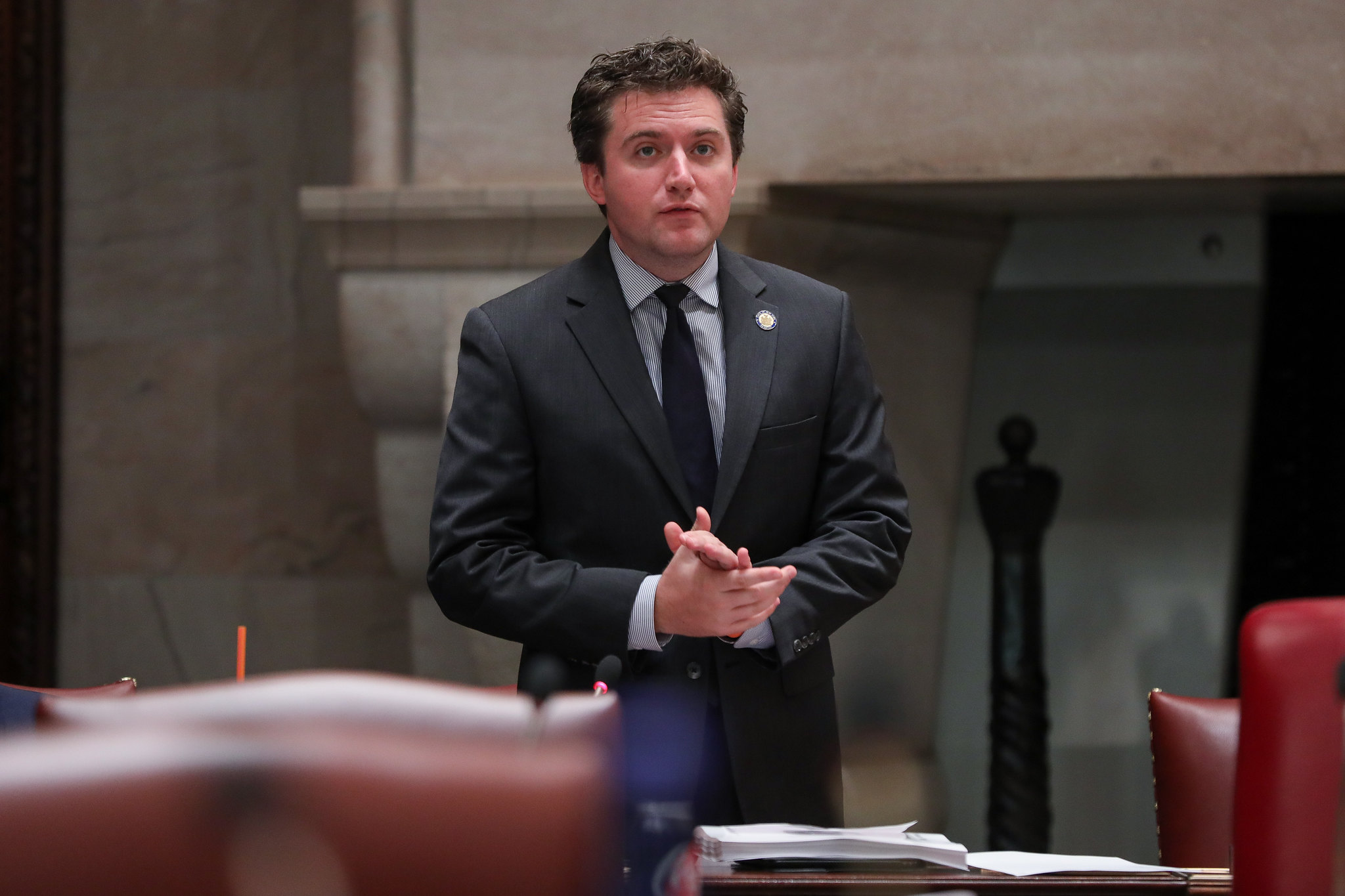Policy
The Legislature doesn’t want to force suburbs to build more housing. Advocates are calling them on it.
Gov. Kathy Hochul proposed aggressive building targets all over the state. Lawmakers roundly rejected her enforcement plans.

As part of her plan, Hochul set a housing growth mandate of 3% over three years downstate (areas served by the Metropolitan Transportation Authority) and 1% over three years upstate. Alan Schein Photography
When Gov. Kathy Hochul unveiled her plan to build 800,000 new units of housing over the next decade in January, suburban lawmakers immediately pushed back against the proposal, citing concerns over local autonomy over development. Now, months later, both chambers of the state Legislature have sided with the suburbanites.
Both houses approved budget resolutions that drastically cut back on the governor’s plan. Lawmakers have proposed removing the governor’s growth mandates and local zoning overrides in favor of $500 million in funding incentives to hit new development targets. But housing and development advocates say that without the teeth of enforcement, the state won’t hit its housing goals.
As part of her plan, Hochul set a housing growth mandate of 3% over three years downstate (areas served by the Metropolitan Transportation Authority) and 1% over three years upstate. Localities that didn’t hit those targets would risk the state stepping in to override their zoning laws to spur more development. Andrew Fine, policy director at the pro-development group Open New York, said he was disappointed to see the Legislature remove the enforcement mechanisms in favor of incentives for local leaders, a method that he said doesn’t work. “We would expect the growth rate of new supply would be very low if that were the final outcome,” Fine said of the Legislature’s plan. A new study from the Furman Center supports Fine’s assessment that an incentives only housing plan won’t produce sufficient housing. He also noted that legislative leaders did not include a replacement to the 421-a developer tax break to incentivize housing production in New York City, a necessity for roughly half of the 800,000 units of housing Hochul wants to build – according to her own plan.

Suburban ire
The governor’s so-called Housing Compact got an incredibly poor reception in the suburbs, particularly on Long Island and in the Hudson Valley. Local officials lobbied strongly against what they considered state overreach, and state lawmakers from those areas expressed displeasure with Hochul’s proposal. State Sen. James Skoufis, a Democrat from the Hudson Valley, is one such lawmaker, who praised his chamber’s decision to remove the specter of local override and propose $500 million in incentives to get localities to hit housing targets. He told City & State that his chamber took “the smarter approach” that “fosters cooperation and partnership rather than heavy-handedness.”
But Fine said evidence shows that incentive programs like the Legislature proposed don’t work. He said states like Massachusetts, Connecticut and California have tried that approach for decades, and it hasn’t panned out. “Towns have just not taken those states up on it, they’ve just said, ‘No thanks to the money and we’ll keep our zoning the way it is,’” Fine said. “We’ve seen towns across the country just reject the premise of these bribes for zoning reform.” He said enforcement mechanisms, like the state stepping in to override zoning laws, are necessary to achieve even minimal levels of growth. “Everywhere this happens… many places are noncompliant, and without consequences, they will remain noncompliant,” Fine said.
Still, Skoufis maintained that the local officials have expressed to him that the Senate plan would get them to build more. “Almost to a person, they told me that this approach would be far better received and that with incentives they would take… a stronger look at how they can build out, and in an intelligent way, communities,” Skoufis said. In terms of reception, he seemed to be right. “The housing proposal in the Senate one-house budget acknowledges the essential role local democracy plays in establishing land use policy and that the state government should not circumvent this process,” Peter Baynes, executive director of the New York State Conference of Mayors, said in a statement following the Senate’s passage of its budget resolution.
“Recognizing that it’s OK to have mixed income”
Assembly Member Pat Fahy, whose conference included its own similar incentive program, acknowledged that the concerns of suburban lawmakers played a role in how the legislative proposals turned out. “I agree with the governor, we must grow housing,” Fahy, who represents the Albany area, told City & State. “It’s clear that in some communities, there’s serious resistance.” She added that the plan that her chamber approved was meant to “take some of the pressure off the mandate side of it.” She said that despite the changes, she remains optimistic that the state will land on a plan that will lead to more housing development.
But Fahy also said that she sees an “undercurrent” of resistance in wealthy suburbs about the lower-income residents that new developments may attract. “I’m not naive,” she said of the degree of pushback that the governor’s housing plan received from some local officials. “But I think it will change when you see some communities step forward, recognizing that it’s OK to have mixed income.”
Asked about her housing plan and the resistance to it at a press conference on Wednesday, Hochul called the potential to override local zoning “one of the cornerstones of our policy.” Despite the characterization by some local leaders, she stated her belief that her plan still offers municipalities a great deal in flexibility. Hochul called the backlash her plan has received “hysteria,” but that her administration is “trying to take the fear out of this and let people know this is going to be phenomenally popular.”

NEXT STORY: Major arrests in New York City at highest point since Giuliani
